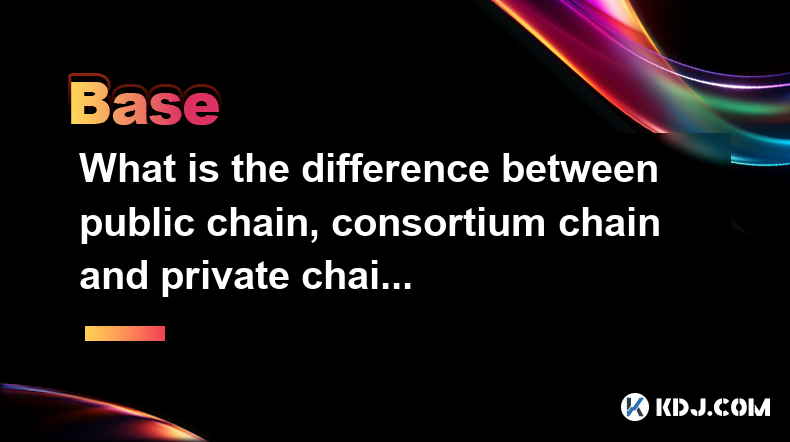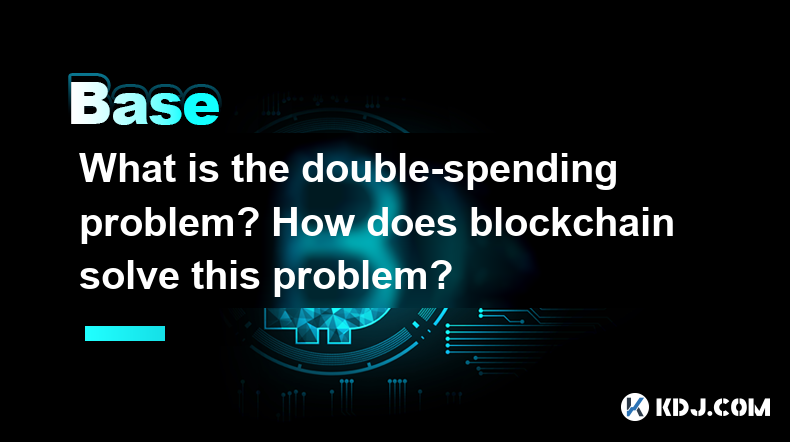-
 Bitcoin
Bitcoin $83,648.2009
1.02% -
 Ethereum
Ethereum $1,809.6283
-0.13% -
 Tether USDt
Tether USDt $0.9997
0.01% -
 XRP
XRP $2.1243
3.47% -
 BNB
BNB $596.8488
1.02% -
 Solana
Solana $122.2464
4.75% -
 USDC
USDC $0.9999
0.00% -
 Dogecoin
Dogecoin $0.1707
6.09% -
 Cardano
Cardano $0.6597
1.85% -
 TRON
TRON $0.2389
0.47% -
 Chainlink
Chainlink $12.8806
0.45% -
 UNUS SED LEO
UNUS SED LEO $9.1411
-3.19% -
 Toncoin
Toncoin $3.3929
-5.49% -
 Stellar
Stellar $0.2593
-0.69% -
 Avalanche
Avalanche $18.1618
0.48% -
 Sui
Sui $2.2500
0.45% -
 Shiba Inu
Shiba Inu $0.0...01228
0.96% -
 Hedera
Hedera $0.1636
0.95% -
 Litecoin
Litecoin $84.0523
0.98% -
 Polkadot
Polkadot $4.0193
-0.62% -
 MANTRA
MANTRA $6.2639
-2.15% -
 Bitcoin Cash
Bitcoin Cash $300.5204
0.31% -
 Bitget Token
Bitget Token $4.5235
0.86% -
 Dai
Dai $1.0000
0.00% -
 Ethena USDe
Ethena USDe $0.9990
-0.04% -
 Hyperliquid
Hyperliquid $11.9342
1.49% -
 Monero
Monero $215.8659
0.64% -
 Uniswap
Uniswap $5.8948
1.20% -
 Pi
Pi $0.5213
-9.02% -
 Pepe
Pepe $0.0...07186
7.99%
What role does consensus mechanism play in blockchain? Why can't everyone keep accounts?
Consensus mechanisms are vital for blockchain integrity, preventing fraud by ensuring all nodes agree on the ledger's state, crucial for decentralized systems.
Apr 05, 2025 at 12:29 am

The consensus mechanism is a fundamental component of blockchain technology, serving as the backbone for maintaining the integrity and security of the network. It ensures that all participants in the network agree on the state of the ledger, which is crucial for the decentralized nature of blockchain. Without a consensus mechanism, the decentralized system would be vulnerable to fraud and manipulation, as there would be no way to verify the authenticity of transactions.
The Importance of Consensus Mechanisms
Consensus mechanisms are essential for achieving agreement among distributed nodes in a blockchain network. They enable the network to function without a central authority, ensuring that all participants have a consistent view of the ledger. This is achieved through various algorithms that dictate how nodes reach a consensus on the validity of transactions and the order in which they are added to the blockchain.
Types of Consensus Mechanisms
There are several types of consensus mechanisms, each with its own strengths and weaknesses. Proof of Work (PoW), used by Bitcoin, requires nodes to solve complex mathematical problems to validate transactions and add them to the blockchain. Proof of Stake (PoS), on the other hand, selects validators based on the number of coins they hold and are willing to "stake" as collateral. Other mechanisms include Delegated Proof of Stake (DPoS), Proof of Authority (PoA), and Byzantine Fault Tolerance (BFT).
Why Consensus Mechanisms Are Necessary
Consensus mechanisms are necessary because they prevent double-spending and ensure the integrity of the blockchain. Without them, malicious actors could manipulate the ledger by adding fraudulent transactions or altering existing ones. By requiring nodes to agree on the state of the ledger, consensus mechanisms make it extremely difficult for any single entity to control the network.
The Challenge of Decentralized Accounting
The question of why everyone can't keep accounts in a blockchain system is closely tied to the need for consensus mechanisms. If everyone were allowed to keep their own version of the ledger, there would be no way to ensure that all versions are consistent. This would lead to chaos, as different participants could have different views of the state of the network, making it impossible to trust the integrity of the blockchain.
The Role of Nodes in Consensus
In a blockchain network, nodes play a crucial role in maintaining the consensus. Nodes are responsible for validating transactions and adding them to the blockchain. They do this by following the rules set by the consensus mechanism. For example, in a PoW system, nodes compete to solve cryptographic puzzles, and the first to solve it gets to add a new block to the chain. In a PoS system, nodes are chosen to validate transactions based on their stake in the network.
The Impact of Consensus on Network Security
Consensus mechanisms also play a critical role in securing the blockchain network. By requiring a majority of nodes to agree on the state of the ledger, consensus mechanisms make it extremely difficult for malicious actors to take control of the network. For example, in a PoW system, an attacker would need to control more than 50% of the network's computing power to successfully launch a 51% attack. Similarly, in a PoS system, an attacker would need to control a majority of the staked coins to manipulate the network.
The Trade-offs of Different Consensus Mechanisms
Different consensus mechanisms come with different trade-offs in terms of security, scalability, and decentralization. PoW, for example, is highly secure but energy-intensive and slow. PoS, on the other hand, is more energy-efficient and faster but may be less decentralized if a small number of participants control a large portion of the staked coins. DPoS and PoA offer higher scalability but at the cost of some decentralization. Understanding these trade-offs is crucial for choosing the right consensus mechanism for a particular blockchain application.
The Role of Consensus in Blockchain Governance
Consensus mechanisms also play a role in blockchain governance, as they determine how changes to the protocol are implemented. In some blockchains, changes require a hard fork, where a majority of nodes must agree to adopt the new rules. In others, changes can be implemented through a soft fork, where nodes can continue to operate under the old rules while gradually transitioning to the new ones. The choice of consensus mechanism can significantly impact the ease and speed of implementing governance changes.
The Limitations of Consensus Mechanisms
While consensus mechanisms are essential for the functioning of blockchain networks, they are not without limitations. They can be slow and resource-intensive, particularly in the case of PoW. They can also be vulnerable to certain types of attacks, such as 51% attacks in PoW systems or nothing-at-stake attacks in PoS systems. Understanding these limitations is crucial for designing effective blockchain systems.
Frequently Asked Questions
Q: Can a blockchain function without a consensus mechanism?
A: No, a blockchain cannot function effectively without a consensus mechanism. Without it, there would be no way to ensure that all participants agree on the state of the ledger, leading to potential fraud and manipulation.
Q: How does the choice of consensus mechanism affect the scalability of a blockchain?
A: The choice of consensus mechanism can significantly impact the scalability of a blockchain. For example, PoW is less scalable due to its energy-intensive nature, while PoS and DPoS can offer higher scalability but may compromise on decentralization.
Q: What is the role of incentives in consensus mechanisms?
A: Incentives play a crucial role in consensus mechanisms by motivating nodes to participate in the validation process. In PoW, nodes are rewarded with newly minted coins for solving cryptographic puzzles. In PoS, nodes earn transaction fees for validating transactions. These incentives help maintain the security and integrity of the network.
Q: How do consensus mechanisms impact the energy consumption of a blockchain?
A: Consensus mechanisms can have a significant impact on the energy consumption of a blockchain. PoW, for example, is highly energy-intensive due to the computational power required to solve cryptographic puzzles. PoS, on the other hand, is much more energy-efficient, as it does not require such intensive computations.
Disclaimer:info@kdj.com
The information provided is not trading advice. kdj.com does not assume any responsibility for any investments made based on the information provided in this article. Cryptocurrencies are highly volatile and it is highly recommended that you invest with caution after thorough research!
If you believe that the content used on this website infringes your copyright, please contact us immediately (info@kdj.com) and we will delete it promptly.
- Hamster Kombat GameDev Heroes Daily Cipher Codes And Combo Cards Today April 3, 2025
- 2025-04-05 07:30:12
- Exploring the Relationship Between XRP Price and the Efficiency of XRP Transactions
- 2025-04-05 07:30:12
- US Government Imposes Reciprocal Tariffs on China, the UK and South Korea, Affecting the Entire Global Market
- 2025-04-05 07:25:12
- XRP Price Analysis: Recent 0.80% Drop Shows Sellers Have Taken Control
- 2025-04-05 07:25:12
- VanEck Registers Binance Coin (BNB) Exchange-Traded Fund in Delaware
- 2025-04-05 07:20:12
- Cardano (ADA) Has Taken a Decisive Step in Its Evolution by Obtaining a New Listing on Coinbase
- 2025-04-05 07:20:12
Related knowledge

Why is the oracle called the bridge between blockchain and the real world?
Apr 04,2025 at 04:00am
The concept of an oracle in the cryptocurrency and blockchain world is crucial for understanding how these decentralized systems interact with external data. The oracle is often referred to as the bridge between blockchain and the real world because it serves as a vital intermediary that fetches, verifies, and transmits off-chain data to the on-chain en...

What is the Byzantine Generals Problem? How does blockchain solve this problem?
Apr 05,2025 at 06:29am
The Byzantine Generals Problem is a classic problem in the field of distributed computing and computer science, which has significant implications for the reliability and security of decentralized systems, including blockchain technology. This problem is named after a hypothetical scenario involving several generals of the Byzantine army who must coordi...

What role does the Merkle tree play in the blockchain? Why can it verify data integrity?
Apr 04,2025 at 01:29pm
The Merkle tree plays a crucial role in the blockchain, primarily due to its ability to efficiently and securely verify data integrity. This article will delve into the structure of a Merkle tree, its implementation in blockchain, and how it ensures the integrity of data. Understanding the Structure of a Merkle TreeA Merkle tree, also known as a hash tr...

What is the difference between public chain, consortium chain and private chain? What scenarios are suitable for each?
Apr 04,2025 at 09:21pm
In the world of blockchain technology, understanding the differences between public chains, consortium chains, and private chains is crucial for selecting the right type of blockchain for specific applications. Each type of blockchain has its own unique characteristics and use cases, which we will explore in detail. Understanding Public ChainsPublic cha...

What is the double-spending problem? How does blockchain solve this problem?
Apr 04,2025 at 09:07am
The double-spending problem is a significant challenge in the realm of digital currencies. Double-spending refers to the potential for a digital currency to be spent more than once. This issue arises because digital files, unlike physical cash, can be easily duplicated. If not addressed, double-spending could undermine the integrity and trust in any dig...

What role does consensus mechanism play in blockchain? Why can't everyone keep accounts?
Apr 05,2025 at 12:29am
The consensus mechanism is a fundamental component of blockchain technology, serving as the backbone for maintaining the integrity and security of the network. It ensures that all participants in the network agree on the state of the ledger, which is crucial for the decentralized nature of blockchain. Without a consensus mechanism, the decentralized sys...

Why is the oracle called the bridge between blockchain and the real world?
Apr 04,2025 at 04:00am
The concept of an oracle in the cryptocurrency and blockchain world is crucial for understanding how these decentralized systems interact with external data. The oracle is often referred to as the bridge between blockchain and the real world because it serves as a vital intermediary that fetches, verifies, and transmits off-chain data to the on-chain en...

What is the Byzantine Generals Problem? How does blockchain solve this problem?
Apr 05,2025 at 06:29am
The Byzantine Generals Problem is a classic problem in the field of distributed computing and computer science, which has significant implications for the reliability and security of decentralized systems, including blockchain technology. This problem is named after a hypothetical scenario involving several generals of the Byzantine army who must coordi...

What role does the Merkle tree play in the blockchain? Why can it verify data integrity?
Apr 04,2025 at 01:29pm
The Merkle tree plays a crucial role in the blockchain, primarily due to its ability to efficiently and securely verify data integrity. This article will delve into the structure of a Merkle tree, its implementation in blockchain, and how it ensures the integrity of data. Understanding the Structure of a Merkle TreeA Merkle tree, also known as a hash tr...

What is the difference between public chain, consortium chain and private chain? What scenarios are suitable for each?
Apr 04,2025 at 09:21pm
In the world of blockchain technology, understanding the differences between public chains, consortium chains, and private chains is crucial for selecting the right type of blockchain for specific applications. Each type of blockchain has its own unique characteristics and use cases, which we will explore in detail. Understanding Public ChainsPublic cha...

What is the double-spending problem? How does blockchain solve this problem?
Apr 04,2025 at 09:07am
The double-spending problem is a significant challenge in the realm of digital currencies. Double-spending refers to the potential for a digital currency to be spent more than once. This issue arises because digital files, unlike physical cash, can be easily duplicated. If not addressed, double-spending could undermine the integrity and trust in any dig...

What role does consensus mechanism play in blockchain? Why can't everyone keep accounts?
Apr 05,2025 at 12:29am
The consensus mechanism is a fundamental component of blockchain technology, serving as the backbone for maintaining the integrity and security of the network. It ensures that all participants in the network agree on the state of the ledger, which is crucial for the decentralized nature of blockchain. Without a consensus mechanism, the decentralized sys...
See all articles





















































































